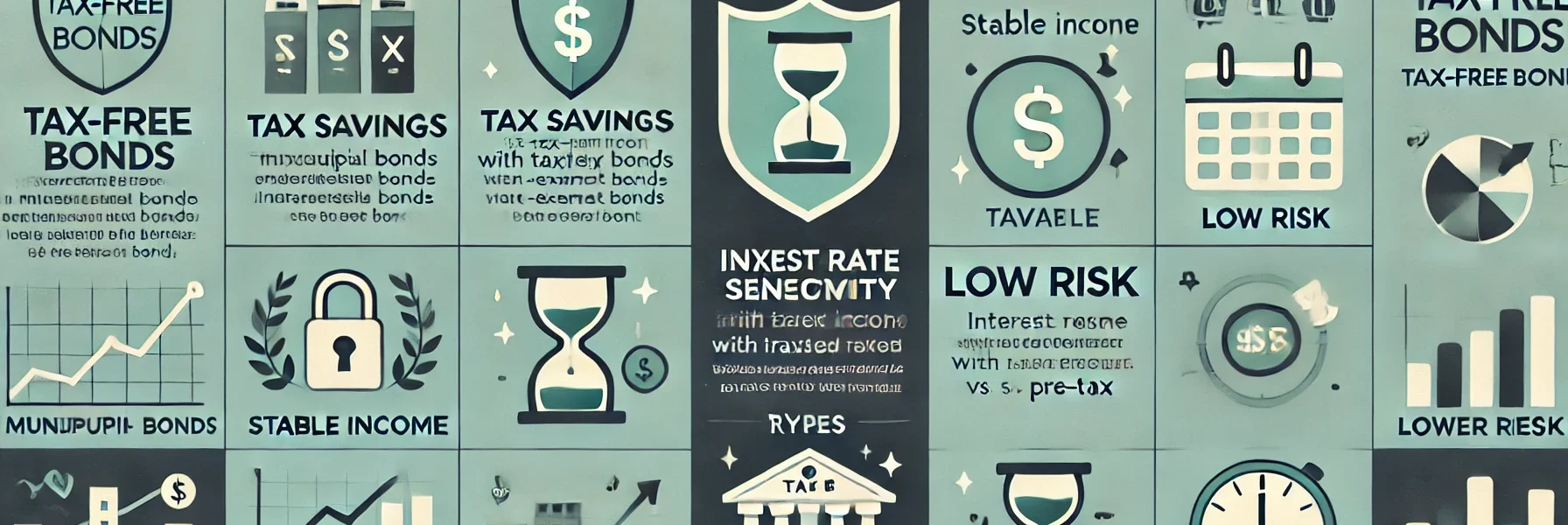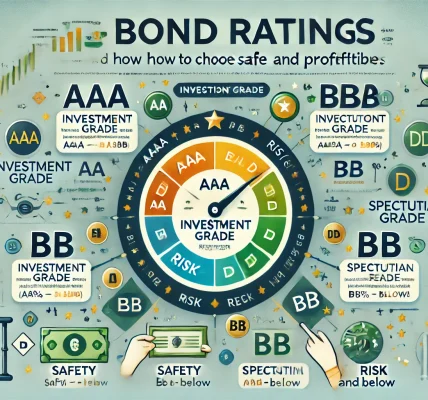Investing in bonds is a time-tested way to secure steady returns and preserve capital. Among the many bond options available, tax-free bonds are an attractive choice for investors seeking to minimize their tax liabilities while earning consistent income. But what exactly are tax-free bonds, and how can they fit into your financial strategy?
In this comprehensive guide, we will explore the concept of tax-free bonds, their benefits, potential risks, and who can benefit the most from investing in them. By the end, you’ll have a clear understanding of whether tax-free bonds align with your investment goals.
What Are Tax-Free Bonds?
Tax-free bonds are fixed-income securities issued by government-backed entities such as municipalities, public sector companies, or infrastructure agencies. The primary advantage of these bonds is that the interest earned is exempt from federal taxes and, in some cases, state and local taxes.
Examples of tax-free bonds include:
- Municipal Bonds (Munis): Issued by state or local governments to fund public projects like schools and highways.
- Infrastructure Bonds: Issued to finance long-term public infrastructure projects.
These bonds typically have longer maturity periods (10-30 years) and are considered low-risk investments due to their government backing.
How Do Tax-Free Bonds Work?
When you purchase a tax-free bond, you are essentially lending money to the issuing authority. In return, you receive regular interest payments (called coupons) and the principal amount back at maturity.
Key Features of Tax-Free Bonds:
- Fixed Interest Rate: Pre-determined coupon rates paid periodically (typically semi-annually or annually).
- Tax Exemption: Interest income is exempt from specific taxes, depending on the issuing authority.
- Liquidity: Can be traded in the secondary market, although less frequently than corporate bonds.
- Maturity Period: Ranges between 10 and 30 years.
Benefits of Investing in Tax-Free Bonds
1. Tax Savings
The most significant advantage of tax-free bonds is the exemption from federal, state, or local income taxes on the interest earned. This can result in a higher effective yield compared to taxable bonds with similar interest rates.
Example:
- A taxable bond with a 7% yield may have a lower after-tax return than a tax-free bond with a 5% yield, depending on your tax bracket.
2. Stable and Predictable Income
Tax-free bonds offer a reliable source of fixed income through periodic coupon payments, making them ideal for retirees and conservative investors seeking consistent cash flow.
3. Low Risk
Because these bonds are issued by government-backed entities, they carry lower default risks compared to corporate bonds. This makes them a safer investment choice.
4. Portfolio Diversification
Including tax-free bonds in your investment portfolio provides diversification, reducing overall risk and increasing stability in volatile markets.
Risks and Challenges of Tax-Free Bonds
While tax-free bonds offer attractive benefits, there are also potential risks and limitations to consider.
1. Interest Rate Risk
Tax-free bonds are sensitive to changes in interest rates. When rates rise, bond prices fall, which can reduce their market value if you need to sell before maturity.
2. Lower Yields
Tax-free bonds generally offer lower yields compared to taxable corporate bonds due to their tax advantages. This may reduce your overall returns if you are in a lower tax bracket.
3. Liquidity Concerns
Although tax-free bonds are tradable, they tend to be less liquid than other fixed-income securities. Selling them before maturity may be challenging or require accepting a lower price.
4. Long Maturity Periods
Most tax-free bonds have extended maturity periods, which means you may have to wait decades to receive your principal investment back. This can limit your financial flexibility.
Who Should Invest in Tax-Free Bonds?
Tax-free bonds are not a one-size-fits-all investment. Here are some scenarios where they may be particularly beneficial:
1. High-Income Earners
Investors in higher tax brackets benefit the most from the tax-exempt nature of these bonds, as the after-tax returns are higher than comparable taxable investments.
2. Retirees and Income Seekers
Those seeking steady, reliable income without worrying about tax erosion may find tax-free bonds an ideal addition to their retirement portfolios.
3. Risk-Averse Investors
Investors who prioritize capital preservation over high returns can benefit from the low-risk nature of tax-free bonds.
4. Long-Term Investors
Individuals with long investment horizons and no immediate liquidity needs may find tax-free bonds appealing due to their long maturity periods and stable payouts.
Tax-Free Bonds vs. Taxable Bonds: A Comparison
| Feature | Tax-Free Bonds | Taxable Bonds |
|---|---|---|
| Tax Treatment | Interest is tax-exempt | Interest is subject to tax |
| Yield | Lower (but tax-efficient) | Higher (pre-tax) |
| Risk | Lower (government-backed) | Higher (corporate credit risk) |
| Liquidity | Moderate (less frequent trading) | High (actively traded) |
| Best For | High-income, conservative investors | Income-focused, risk-tolerant investors |
Tips for Investing in Tax-Free Bonds
- Evaluate Your Tax Bracket: Higher tax brackets typically gain the most benefit from tax-free bonds.
- Diversify: Include a mix of municipal, government, and corporate bonds for better balance.
- Consider Duration: Ensure the bond’s maturity aligns with your financial goals.
- Research the Issuer: Assess the creditworthiness of the issuing entity to minimize default risk.
- Monitor Interest Rates: Stay informed on interest rate trends to avoid price volatility risks.
Conclusion
Tax-free bonds offer a compelling option for investors seeking tax-efficient income, low risk, and portfolio diversification. While they come with certain risks like interest rate sensitivity and lower yields, their tax advantages make them particularly appealing to high-income earners and risk-averse investors.
Understanding the benefits and potential pitfalls of tax-free bonds allows you to make informed decisions and align your investments with your long-term financial goals. Always consult with a financial advisor to tailor your investment strategy to your unique needs and circumstances.



